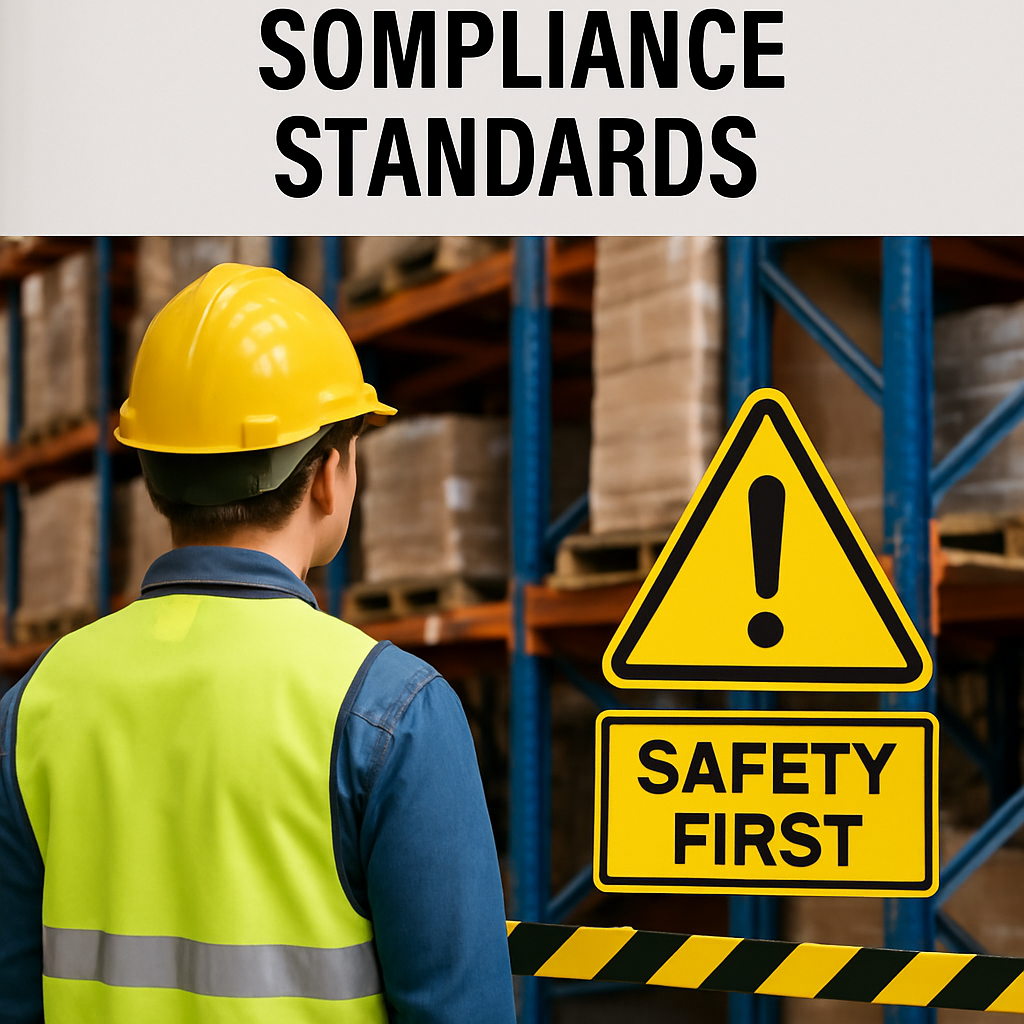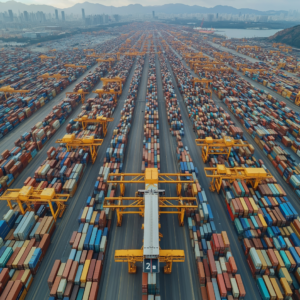Warehouse Safety & Compliance Standards in Malaysia: The Ultimate How-to Guide for Corporate Professionals
Warehouses are the backbone of Malaysia’s thriving logistics, manufacturing, and e-commerce sectors. In this complex ecosystem, the safety of warehouse operations goes far beyond protecting products on shelves—it is crucial for safeguarding your workforce, ensuring regulatory compliance, and supporting overall business performance. In Malaysia, adhering to warehouse safety standards, especially those grounded in OSHA regulations, is non-negotiable for corporate professionals charged with facility management, operations, or health and safety roles.
This definitive how-to guide provides an in-depth exploration of warehouse safety Malaysia principles. You’ll discover how to navigate key workplace safety guidelines, comply with statutory requirements, prevent fires, and embed a safety-first culture within your organization. Packed with actionable steps, real-world examples, and compliance illustrations, this guide will empower you to transform your warehouse environment into a safer, more efficient, and legally compliant operation.
Table of Contents
- Introduction to Warehouse Safety in Malaysia
- Understanding Malaysian OSHA Regulations
- Essential Workplace Safety Guidelines
- Fire Safety in Warehouses: Risks, Laws, and Best Practices
- Developing an Effective Warehouse Safety Plan
- Illustrative Case Studies: Lessons from the Field
- Step-by-Step Actions to Improve Warehouse Safety
- Building and Sustaining a Safety-Driven Culture
- Conclusion and Next Steps
1. Introduction to Warehouse Safety in Malaysia
The Economic Context
Malaysia’s robust manufacturing, logistics, and e-commerce landscape places immense strategic importance on warehouses. These facilities are hubs of activity—home to heavy equipment, large volumes of inventory, and high-traffic footpaths. The intricate flow of goods and people brings with it a host of risks, including machinery accidents, falls, fires, and hazardous material exposure.
Why Warehouse Safety Matters
For corporate professionals, ensuring warehouse safety Malaysia compliance isn’t just about checking regulatory boxes:
- Human Welfare: Safeguarding employees against injury and health risks.
- Legal Repercussions: Avoiding steep fines, operational shutdowns, and reputational damage from non-compliance.
- Business Efficiency: Reducing downtime, insurance claims, and storage system disruptions.
- Brand Reputation: Winning the trust of clients, regulators, and partners through a proven safety track record.
Industry Spotlight:
According to the Social Security Organisation (SOCSO), Malaysia recorded over 47,000 occupational accidents in 2022, with a high proportion occurring in warehouse settings. Experts emphasize that most accidents were preventable by adhering to workplace safety guidelines and enforcing a culture of compliance.
2. Understanding Malaysian OSHA Regulations
Overview of the Occupational Safety and Health Act 1994
At the core of Malaysia’s approach to workplace safety is the Occupational Safety and Health Act 1994 (OSHA 1994). This act sets forth fundamental legal obligations for employers, supervisors, and employees in managing health and safety at work.
Key OSHA Regulations Relevant to Warehouses
- Section 15: Mandates employers to ensure, as far as practicable, the safety, health, and welfare of all employees.
- Section 24: Assigns employees the duty to adhere to established safety rules and not to endanger themselves or others.
- Risk Assessment: Employers must assess risks and implement effective control measures (Regulation 6).
Compliance Requirements: What Corporate Professionals Need to Know
Hazard Identification, Risk Assessment, and Risk Control (HIRARC)
- Conduct regular HIRARC to uncover hazards in storage, material handling, machinery, and layout design.
- Utilize hazard identification checklists and reporting systems.
Training and Supervision
- Ensure all staff receive relevant safety induction and periodic refresher courses.
- Assign trained supervisors to monitor compliance in daily operations.
Recording and Reporting
- Maintain an Incident Register documenting workplace accidents and near-misses.
- Report fatal or major injuries to the Department of Occupational Safety and Health (DOSH) within stipulated timelines.
Penalties and Recent Enforcement Actions
Non-compliance may result in fines up to RM50,000, imprisonment of up to two years, or both, for each violation.
Case in Point:
In 2023, a Penang electronics warehouse operator was fined RM30,000 after a worker was injured due to racking collapse caused by poor risk assessment and ignored maintenance schedules.
3. Essential Workplace Safety Guidelines
Employing a blend of OSHA regulations, industry best practices, and site-specific controls is critical for comprehensive warehouse safety Malaysia compliance.
3.1. Machinery, Equipment, and Vehicle Safety
Safe Operation of Forklifts and Material Handling Equipment
- Only certified operators should use forklifts, reach trucks, or pallet movers.
- Inspect vehicles daily—brake checks, horn, lights, tire conditions.
- Prohibit mobile phone use while operating machinery.
Example:
A Selangor distribution warehouse recorded a 70% reduction in vehicular incidents after implementing a “No Unauthorized Operation” protocol and giving operators color-coded vests for visibility.
Use of Conveyor Systems
- Regularly service and lubricate conveyor belts.
- Install emergency stop switches at intervals accessible to personnel.
- Train workers on hazard zones and prohibited areas near conveyors.
3.2. Safe Storage and Material Handling Practices
- Adhere to racking load ratings and ensure all racking is engineer-certified.
- Routinely check for damaged, bent, or overloaded beams.
- Limit pallet stacking height in accordance with both manufacturer and regulatory guidelines.
Key Storage Tips
- Mark all walkways and storage locations.
- Store heavy goods at lower levels, lighter items above.
- Use anti-collapse mesh on racks bordering aisles.
Real-Life Illustration:
A Johor Bahru auto-parts warehouse moved from single-deep to double-deep racking indoors. By partnering with a racking consultant, they avoided system overloading and won a safety commendation from the industry body.
3.3. Hazard Communication
- Affix hazard warning labels on containers and storage areas.
- Maintain up-to-date Material Safety Data Sheets (MSDS) accessible to all staff.
- Use color-coded signage for chemical, mechanical, or electrical hazards.
- Hold quarterly hazard communication briefings.
3.4. Personal Protective Equipment (PPE)
- Specify PPE requirements by activity: safety helmets, hi-vis vests, steel-capped boots, gloves, eye protection.
- Conduct periodic PPE compliance audits and replace defective items immediately.
- Provide specialized PPE for chemical handling (chemical-resistant aprons, eye wash stations, respirators).
3.5. Ergonomics and Manual Handling
Manual Lifting Best Practices
- Train employees to lift with knees bent and backs straight.
- Limit individual lifting weights; use mechanical aids for heavier loads.
Ergonomic Aids
- Provide height-adjustable tables for packing stations.
- Encourage job rotation to minimize repetitive strain injuries.
Case Study:
At a Klang Valley fulfillment center, ergonomic redesign of packaging lines reduced worker fatigue, dropped musculoskeletal complaints by 40%, and improved daily throughput.
4. Fire Safety in Warehouses: Risks, Laws, and Best Practices
4.1. Malaysian Fire Safety Laws and Regulatory Expectations
Uniform Building By-Laws 1984 (UBBL) and Fire Services Act 1988
- Warehouses storing flammable substances require a Fire Certificate issued by the Fire and Rescue Department of Malaysia (BOMBA).
- Fire detection and suppression systems (smoke detectors, sprinklers) are mandatory based on storage category and scale.
- Emergency egress routes must be clearly marked, accessible, and regularly maintained.
4.2. Major Warehouse Fire Risks
- Faulty wiring, overloaded electrical sockets, and lack of periodic inspections.
- Unlabelled or improperly stored hazardous chemicals.
- Inadequate ventilation and blocked fire exits.
Notable Example:
In 2021, a chemical storage facility in Selangor suffered severe losses from a fire traced to overloaded plug points and absence of mandatory fire separation. The incident led to stricter statewide compliance audits.
4.3. Fire Prevention and Response Strategies
Prevention Measures
- Install automatic fire suppression systems such as sprinklers specific to warehouse risk class.
- Store chemicals and combustibles in accordance with MSDS guidelines.
- Maintain “No Smoking” zones and include prominent signage throughout storage and loading areas.
Fire Response Preparedness
- Conduct at least two full-scale fire drills per year with all personnel.
- Appoint and train fire marshals for each shift.
- Stock accessible fire extinguishers, ensure regular maintenance.
Success Story:
A Johor-based FMCG distributor invested in heat-activated fire shutters and staged hands-on fire extinguisher training. During a minor storage-area fire triggered by machinery overheating, the trained team contained the blaze with no injuries or major property loss, earning a BOMBA public safety commendation.
5. Developing an Effective Warehouse Safety Plan
5.1. Risk Assessment and Hazard Identification
- Conduct comprehensive physical audits of warehouse layout, equipment, and workflows.
- Use digital tools (e.g., HIRARC apps) to log inspections and corrective actions.
- Invite input from frontline workers—“safety walks” can reveal hidden risks.
5.2. Policy Creation and Documentation
- Develop written SOPs for each task: material handling, cleaning, emergency response.
- Distribute safety manuals to all new employees, requiring signed acknowledgment.
- Schedule regular policy reviews and update according to regulatory or operational changes.
5.3. Emergency Preparedness and Response
- Draft site-specific emergency action plans: evacuation, fire, chemical spill, medical emergency.
- Assign floor wardens responsible for ensuring area clearance and headcount during drills.
- Display emergency contact lists at prominent points.
Example:
A logistics provider in Klang standardized monthly evacuation drills and achieved a 50% reduction in evacuation time over six months, meeting compliance targets and boosting employee trust.
6. Illustrative Case Studies: Lessons from the Field
Case Study 1: Proactive Forklift Safety Reduces Injuries
A large Selangor electronics distributor faced recurring forklift incidents: racking impacts and near-misses with pedestrians. They responded by:
- Installing automated speed limiters on all forklifts.
- Painting zebra crossings and forklift-only lanes.
- Rolling out VR-based training on forklift-pedestrian interaction.
Impact:
Over one year, not a single employee was injured by vehicle movement, reducing insurance premiums and earning rave reviews from a visiting multinational client.
Case Study 2: Chemical Safety Transformation in the Paint Industry
A Penang paint manufacturing warehouse routinely handled hazardous solvents and pigments. Gaps in MSDS access and PPE usage led to repeated minor chemical splash injuries.
- Management enforced “PPE first” signage in all chemical areas.
- Provided digital MSDS access via staff tablets.
- Embedded chemical spill drills in onboarding programs.
Result:
Chemical incidents dropped by 80% within six months, while the warehouse secured a three-year “Zero Accident” award from its global parent company.
Case Study 3: How Fire Audit Preparedness Protected Business Continuity
A Shah Alam third-party logistics (3PL) firm underwent a surprise BOMBA inspection:
- Their auto-updating fire alarm panel flagged a minor sensor fault and auto-alerted the safety team.
- All staff safely evacuated in under four minutes during a mock drill.
Outcome:
The inspector cited the warehouse as a state compliance model, leading to new business with safety-conscious multinational clients.
7. Step-by-Step Actions to Improve Warehouse Safety
Step 1: Conduct a Thorough Safety Audit
- Use a checklist covering OSHA, DOSH, and BOMBA requirements.
- Identify physical, biological, ergonomic, and fire risks.
- Prioritize hazards for correction based on severity and likelihood.
Step 2: Roll Out Comprehensive Training and Awareness
- Institute onboarding safety orientation for all new hires.
- Schedule regular refresher training (minimum quarterly).
- Leverage visual aids: posters, videos, floor markings, and safety tip bulletins.
Example:
A Perak-based logistics company introduced bi-lingual safety signage and SMS safety tips, engaging both local and migrant workers.
Step 3: Upgrade Safety Infrastructure and Equipment
- Replace aging forklifts with models featuring anti-tip technology and proximity sensors.
- Retrofit racking with anchor bolts and anti-collapse barriers.
- Upgrade fire suppression systems in line with BOMBA requirements.
Step 4: Establish Robust Incident Reporting and Response Protocols
- Create easy-to-use digital or paper hazard reporting forms.
- Encourage anonymous reporting to address near-misses and root causes.
- Reward proactive safety suggestions (e.g., monthly safety vouchers).
Step 5: Regularly Review Policies and Safety Performance
- Track key safety KPIs (Lost Time Injury Frequency Rate, near-miss counts).
- Benchmark results versus past records and industry averages.
- Engage workers from all shifts in policy review meetings.
Step 6: Foster Collaboration and Continuous Learning
- Partner with third-party safety consultants for periodical audits.
- Join industry safety forums and attend DOSH/BOMBA briefings.
- Share “best practices” and lessons learned across company sites.
8. Building and Sustaining a Safety-Driven Culture
Leadership and Engagement
- Safety must be modeled by top management—participate in audits, lead toolbox talks.
- Establish a cross-departmental safety committee to steer ongoing improvement.
Recognizing and Celebrating Safety Achievements
- Hold annual “Safety Day” events to reinforce learning and celebrate progress.
- Publicly acknowledge teams or individuals for safety contributions.
- Share stories of incident prevention and lives positively impacted by vigilance.
Corporate Example:
A food and beverage supplier in Kuala Lumpur appointed “Safety Ambassadors” on each team. These ambassadors led weekly spot-checks, reported findings, and presented suggestions in monthly safety briefings—creating a peer-driven, self-sustaining safety culture.
Benchmarking and Industry Networking
- Compare safety results to similar businesses in your region.
- Participate in Malaysian safety award programs and industry recognitions.
9. Conclusion and Next Steps
Warehouse safety Malaysia compliance is an ongoing, evolving journey—rooted in legal mandates, industry best practices, and a fundamental respect for human life. For corporate professionals,




